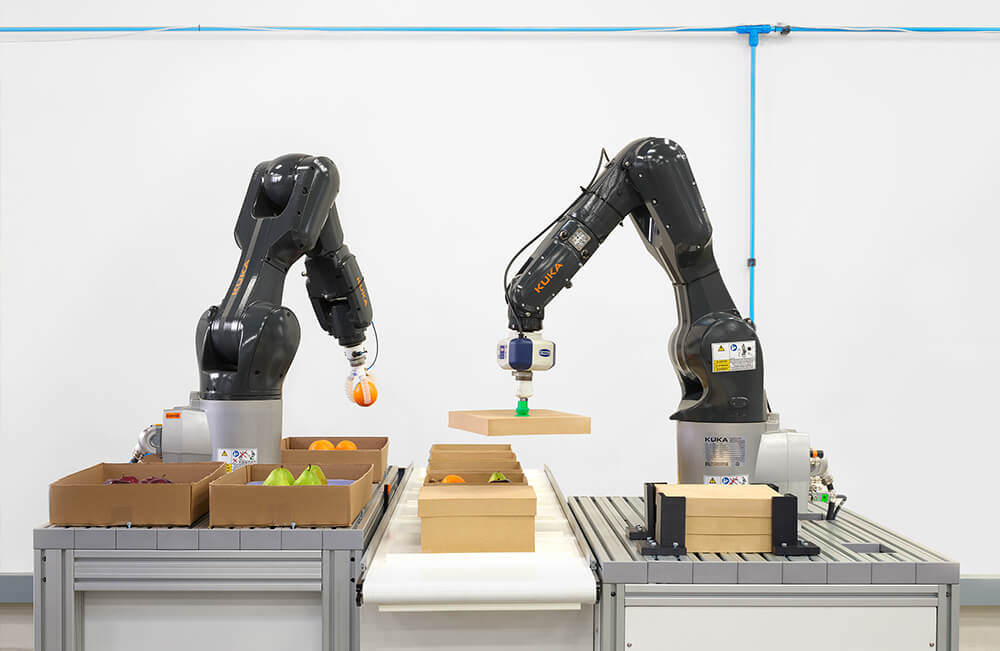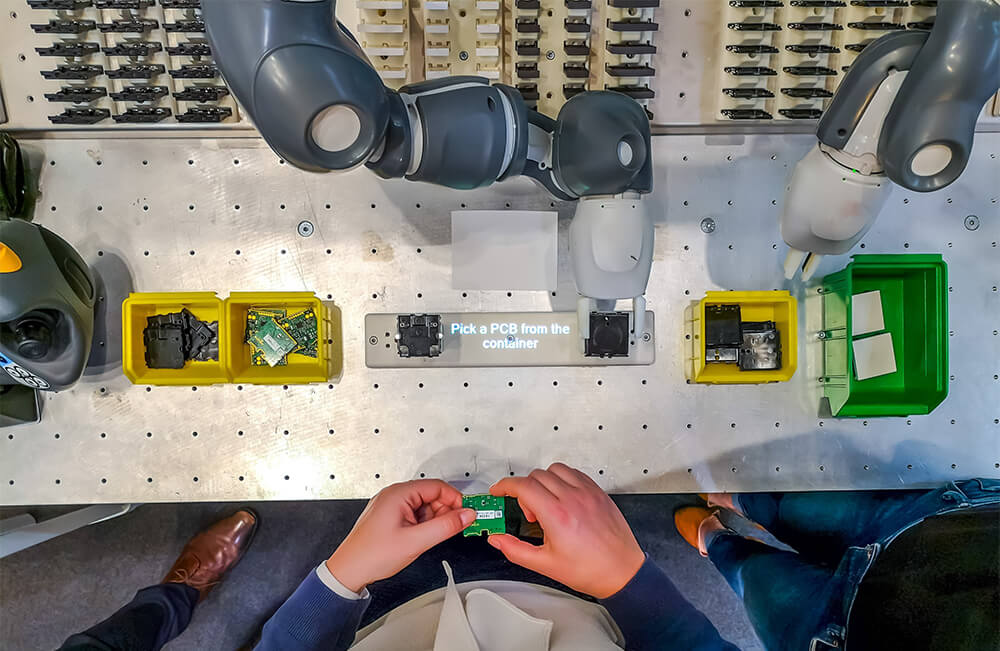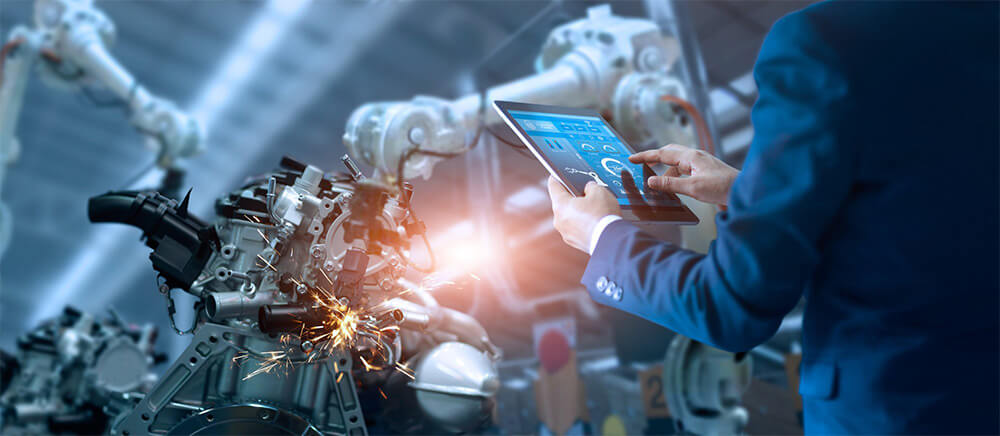How Smart Robots Can Revolutionize Your Workforce
It’s not just for the movies anymore—smart robots are revolutionizing how companies do business. Creeping in around the edges of industry, smart robots represent an entirely novel approach to automation.
Posted October 2021 Back to Resources
How Smart Robots Can Revolutionize Your Workforce
It’s not just for the movies anymore—smart robots are revolutionizing how companies do business. Creeping in around the edges of industry, smart robots represent an entirely novel approach to automation. Already these devices have left their mark on production, utilized to produce million of items—and less expensively than via human labor, saving manufacturers millions of dollars. Soon they will spread throughout the economy, remaking industry.

Smart robots represent an entirely different approach to automation.
But what exactly defines a smart robot? With software that works like a human brain, smart robots can take on complex tasks that no other machine can do. As many companies currently face labor difficulties, this development can be viewed as a timely fix for industry.
Far more advanced than any previous robot, these smart machines are built to manage tasks that hinge on precision and adaptability. Originally optimized for factory and warehouse environments, they are also now spreading into retail, agriculture, healthcare, and other industries.
But not all robots operate the same. Many rely on “machine learning,” a statistical technique that requires considerable human intervention and only functions for tasks broadly comparable to what devices have already learned. In contrast, smart robots such as the innovative devices by Vicarious can think using mental models comparable to our brains. This allows the machines to learn tasks and adjust to new situations quickly.
Differing profoundly from previous market offerings, smart robots combine the merits of humans and traditional robots. They’re the robotic equivalent of the evolutionary jump from monkeys to humans.
Robots Can Slash Constraints on Labor
With the current labor shortage, companies are having difficulty hiring and retaining employees. Smart robots offer a cost-effective method to handle challenging tasks that up until now only humans could perform. Smart robots can analyze what they see, determining how to respond to each unique situation. These cognitive features enable the robots to automate what could not be automated before. As an example, third-party logistics can optimize their operations using smart robots to help them with tasks such as kitting. This would otherwise be labor-intensive and would require a larger workforce, and more work hours. This allows businesses to meet their needs even in the face of difficulty finding and retaining labor.

Smart robots will work alongside human laborers.
Intelligent automation drastically decreases the number of hours of labor necessary for a given business process. Early deployments have shown that smart robots can cut human labor hours by 50% to 90%, depending on the application. This makes organizations more agile and efficient while contributing to financial savings.
Using smart robots for uninteresting or unsafe tasks frees up humans to work on more rewarding activities. These devices can be used to complement, rather than displace, human labor. On the whole, more efficient production techniques boost the economy.
Replacing human labor with smart robots in risky or complex operations not only cuts costs: it also decreases injuries and increases accuracy. You only need to decide which tasks to automate. Vicarious then works with the organization to transfer training from humans to smart robots.
With humans and machines increasingly working side-by-side, collaborative robots mesh with their human colleagues. For example, a firm may have several smart robots on duties like kitting and palletizing, while humans test quality. Humans do the more creative value-adding work, while robots decrease costly error rates dramatically.
How Smart Robots Simulate Human Labor
Smart robots approximate human labor by applying human-like neural networks, which allows the robots to learn complex skills. As such, they can fulfill a business’s needs reliably, with consistent levels of availability and productivity.

Robots increasingly contribute to manufacturing.
Even with numerous different parts to handle, lacking explicit directions, and bouncing between variegated activities, smart robots are unprecedentedly adaptable. They respond to product properties like shape, material, or surface coatings. They also are able to consider varying environmental conditions, like humans. These machines gracefully jump from task to task, applying general principles rather than hard-coded hacks.
Smart robots handle products in hundreds of potential configurations for third-party logistics (3PL) and direct-to-customer businesses. Many products we take for granted entail a complicated manufacturing process, which until now has been performed exclusively by humans. But Vicarious robots can now save enterprises money and reduce labor uncertainty by taking on these tasks.
For example, smart robots can assemble subscription boxes from multiple varying components. The machines instantly adjust to different product mix needs with personalization, enabling them to handle human-level work activities. These robots can also maneuver sensitive parts, such as electronics, medical components, or food and beverages. Precise handling with replaceable modules works somewhat like having hands, eyes, and brains.
Robotic process automation can also efficiently handle tasks like box and pouch kitting, palletizing with intelligent arrangement, wall picking, and customized packaging. These machines handle repetitive tasks which maximize efficiency.
Vicarious can customize smart robots for your business’s specific needs so that these devices can then navigate tasks on their own. You can easily reprogram robots for completely new tasks, too, as your needs change.
Cut Total Costs
Smart robots substantially decrease the cost of business. By reducing labor needs, this new breed of robots can decrease ongoing costs by over 40%. They fit seamlessly into your operations, contributing productively right from installation. With intelligent workflow management, predict and satisfy your labor requirements more consistently. Using the most innovative technology to automate convoluted processes can reinvent your operations.
A smart robotic solution can meet or exceed your throughput and quality thresholds, at a lower cost than what you have now. In fact, one business cut their labor requirements by 80% by employing Vicarious robots!
Vicarious Robots Save You Money at No Risk
Smart robots can fulfill many needs, with no heavy upfront investment necessary. From design and development through installation and maintenance, Vicarious covers the costs, so you only pay for the value the robots give you. You’ll see an immediate return on investment—and those returns will only increase over time!
Vicarious smart robots cut your operating costs without exposing you to unnecessary expenses. These devices work to your standards. After agreeing to a design, we will deliver a precision-engineered solution. Moreover, all replacement parts, software upgrades, and other maintenance activities are included. No more worrying over obsolete equipment or large investments: Vicarious’s robots-as-a-service model eliminates the risk for you.
Future-proof your operations with tools that pay for themselves. Get started now!
